Clayton is the county seat of Saint Louis County, which has been independent of the City of Saint Louis since 1876. It has been called the "second downtown" and is home to numerous corporate headquarters and law firms, as well as large government buildings.

Sited at the top of the tallest hill in Clayton is Saint Joseph Catholic Church. The church was built in 1912, damaged by fire in 1925, rebuilt, and now has a popular noon weekday Mass and strong Marian devotion.
Clayton still had a small-town feel until recent decades. Now high-rise buildings overshadow the church.
In centuries past, Christ and His Church were the most prominent feature of cities, with a tall spire or dome directing pilgrims to their spiritual home. Nowadays, commerce and government dominate the skyline.
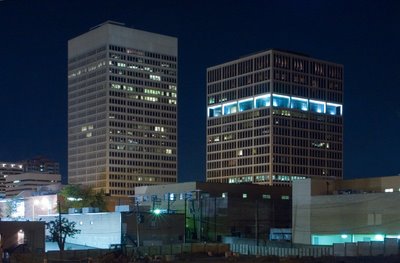
Corporate towers anonymously house Fortune 500 companies. Many companies and individuals have lost their fortunes with extravagant buildings, but perhaps something else is lost in plain buildings as these.
In the 1920s, Le Corbusier designed buildings like these to house the urban poor in Paris. They turned out to be more squalid than what they replaced. High-rises were far more successful as office buildings.
Just in front of these buildings is what's left of the infamous "Clayton Hole": a large-scale construction project, originally eight acres in size, that lost funding. Occupants of expensive suites in neighboring high-rise buildings had to look at an abandoned construction site for many years; but eventually, nature took over and converted the "hole" into a lake, which in turn attracted a large population of Canada Geese.

This is one of the oldest large office buildings in Clayton, done in the then fashionable Colonial Style. There are several other buildings nearby with similar design. The Colonial was a simplified Classical style, which was both attractive yet relatively inexpensive.

The flag fluttering in the breeze. This was a four-second exposure.
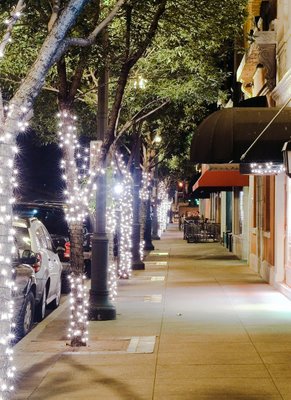
Christmas lights in May. Long-time residents say that Clayton used to "roll up its sidewalks" at 5 p.m.; but since the 1990s, the town has gained a nightlife, with numerous sidewalk cafes.
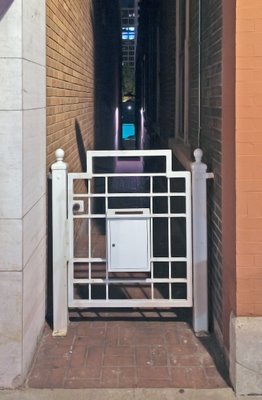
A gated alleyway.
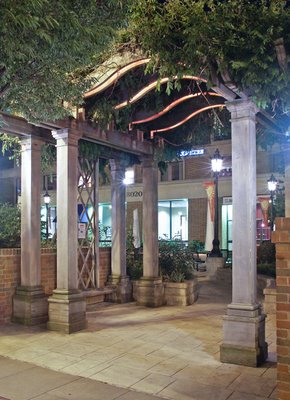
This is an arbor into a courtyard. Back in the early 1970s, a giant plaza was constructed next to the Saint Louis County government center: it was done in the then-fashionable 'Brutalist' style, of stark concrete with no greenery whatsoever. Its numerous park benches were left unused. This newer courtyard with much greenery is inviting.
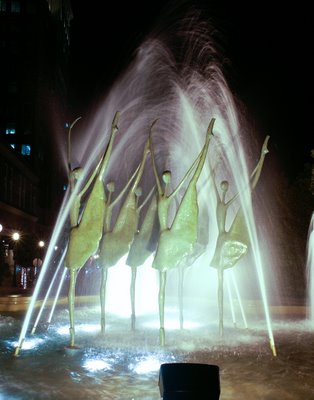
A fanciful fountain.

There are many fountains in town; this one is quite plain, but running water is always a treat.
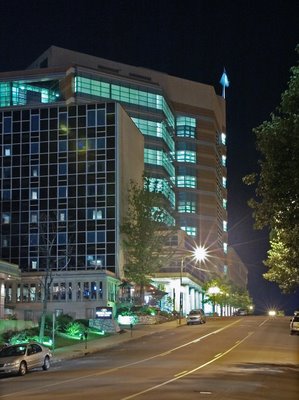
The massive jail, built in 1997. I've been told that a big jail was needed to house a great increase in female criminals; much of that crime is related to casino gambling debts.
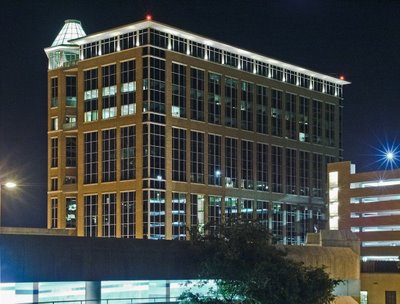
A relatively recent building. Postmodernism tries to dress-up the standard glass box building by adding some decorative elements.
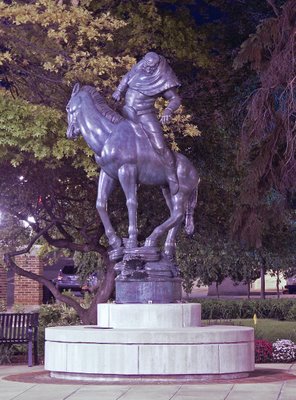
Ever since the Enlightenment, men of means have been uncertain as to what kind artwork to buy. A new breed of experts, the tastemakers, have instead told us what art is fashionable, and that our desire is irrelevant.
This is "Folke Filbyter" by Carl Milles. This character, pagan grandfather of the founder of the ruling nobility of Sweden, is shown here on his 25-year search for his grandson, who was taken by Christian monks, eventually finding him in the service of the King. "Filbyter" means "foal-biter", or one who turns a young stallion into a gelding. Folke was a character in the early 20th-century Swedish nationalistic work "Tree of the Folkungs", popular with the Prussian nobility, and which was part of a broad movement in northern Europe, which sythesized Medieval culture with a mythic, pagan past. This movement, which reached its peak in Germany, was notable for its rejection of Christianity and glorification of the Nordic peoples.
The tastemakers tell us that we should not look for meaning in sculptures such as these, but instead rely on their expertise and taste in artistic matters. I don't think so. The clear meaning of the sculpture is probably not something that that Clayton's city fathers would want to promote.
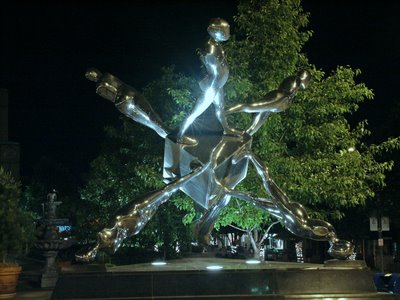
"FM6 Walking Jackman", a statue by local artist Ernest Trova. It's interesting, and I like shiny chrome, but I am not sure what it means, if anything.
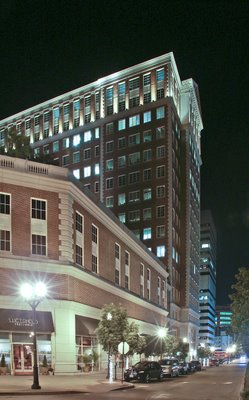
This is one of the newest tall buildings in Clayton, done in the Neoclassical style. It is striking, and is one of the most attractive buildings constructed here in decades.
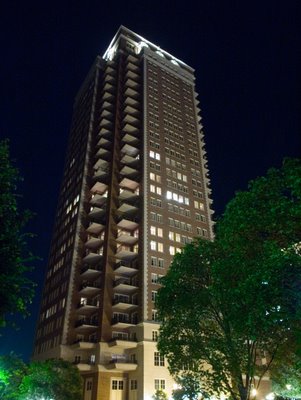
New condominium.


No comments:
Post a Comment